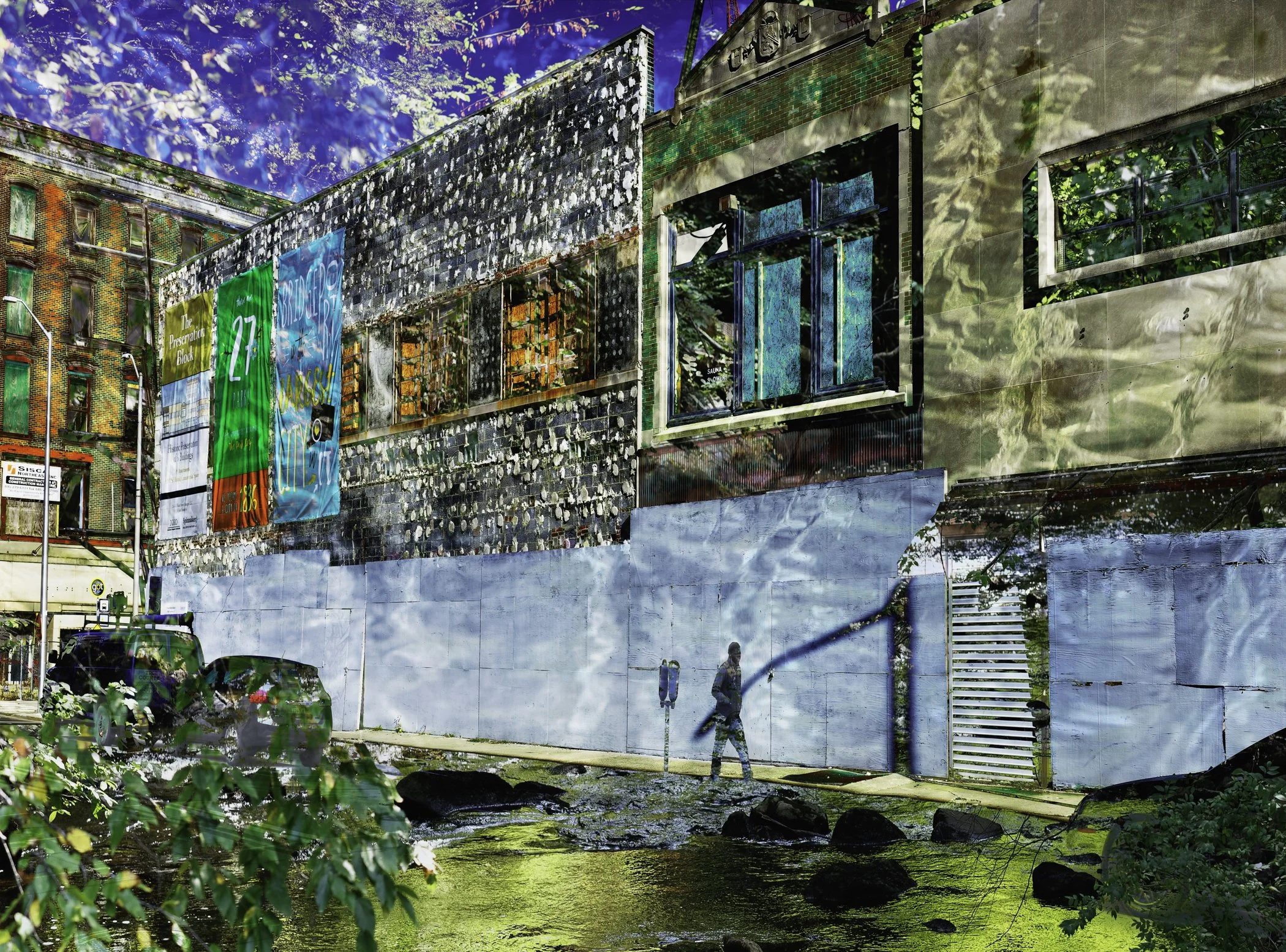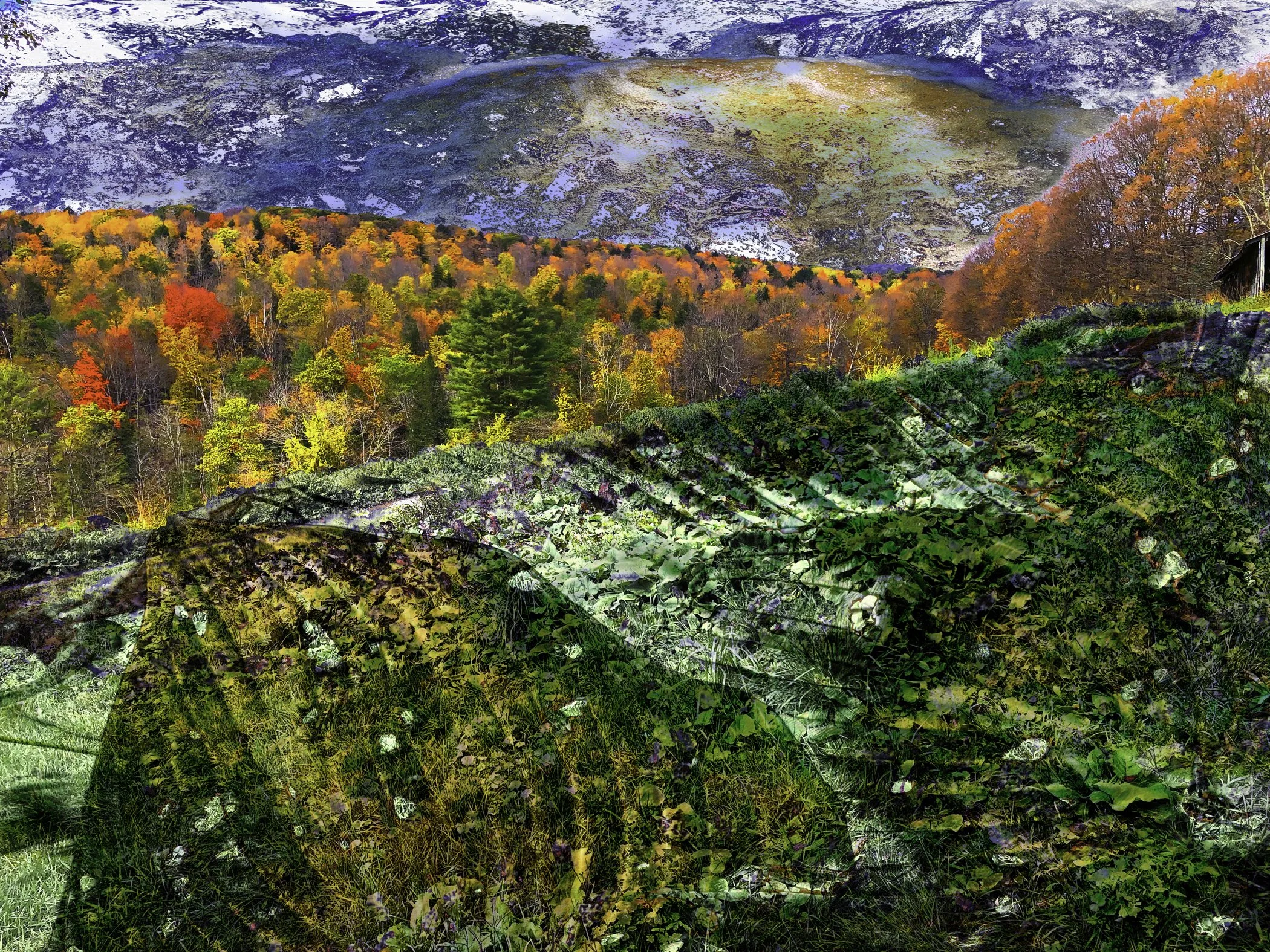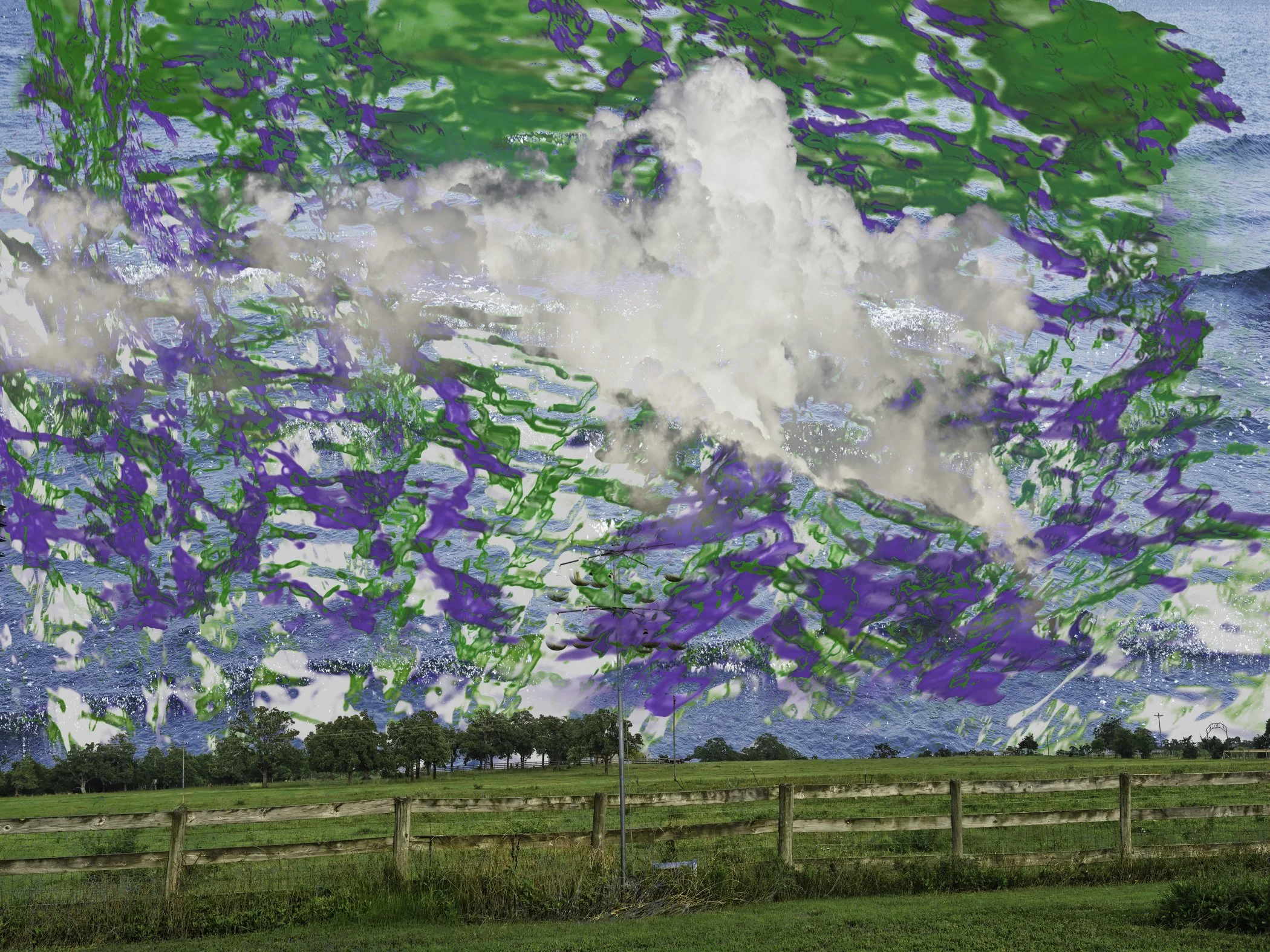LANDSCAPE AS LANGUAGE
The New England landscape holds many stories from the age of glaciers to the post-industrial present. The past is written in a rich visual language across pastures, main streets, and factories. In this body of work, I photographed the man-made “built” environment and the stone, water, and botanical materials of the natural landscape. I was drawn at times to the abandoned factories and forgotten main streets, shipwrecks on the post-industrial coastline. As this work progressed, I became more aware that the natural environment was always there in the surrounding woodlands or along the shore and sometimes sprouting from the cracks in the pavement.
The intent of my lens-based image making was not to represent buildings and trees but to rethink the possibilities for visual expression of something more than the base reality. Fitting pieces of multiple images together led to endless interconnections and new pictures where the parts visually work together in an extended reality. I could see elements of the land retaining their own identity while harmonizing, clarifying, accentuating, and validating other elements. In this way the image-making process could draw out latent connections and take us into a liminal world where shards of reality can join and come alive with their own voice.










